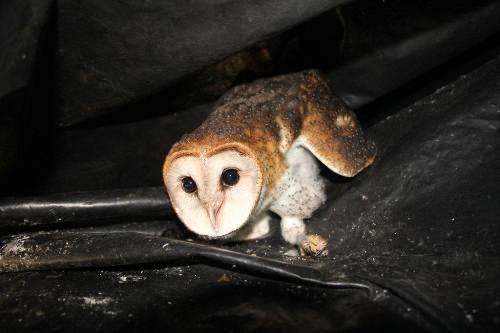Normally my wildlife studies inform my paintings,
but when my research took me to The Galapagos Islands in May I was asked by the Galapagos Conservation Trust to bring back photographs
for a new teaching tool for school children all over the world.
It was the first time that I needed to think about recording an animal or bird’s behaviour in a scientific way, but it turned out that all that was required of me was to observe each species in the same way that I normally would.
It was the first time that I needed to think about recording an animal or bird’s behaviour in a scientific way, but it turned out that all that was required of me was to observe each species in the same way that I normally would.
Last week representatives from GCT came up to Yorkshire from London to pilot the new teaching tool through workshops in four local schools. It was great fun and the kids joined in the Galapagos spirit by dressing up as Galapagos penguins (above), magnificent frigate birds and blue footed boobies.
My list of species to look out for included flightless cormorants, sea lions, waved albatross and even my favourite birds of prey Galapagos short
eared owls and barn owls.
I love owls whether they are
gliding over rough grassland in Yorkshire or volcanic Pacific outcrops and I paint them often.
I had been in the Galapagos for a week when I spotted my
first short-eared owl. It was perched on a roadside fence and I was so excited
at seeing its familiar form I asked the driver of our car to pull over and
quickly lent out of the window with my camera.
I had been touring the islands long enough to know that the
wildlife there is so tame that you can walk amongst it, but I was instinctively
cautious about approaching the owl.
The short-eared owls I'm accustomed to watching in Yorkshire
are wary so it is not easy getting close enough to photograph them.
But as I snapped away at the bird through a long telephoto
lens my colleague, Santiago Bejarano, of Think Galapagos, who is an Ecuador native and provided the local expertise on our
trip, gestured to me in surprise. “Just go and photograph it. It won’t fly
away.”
Sure enough the bird barely glanced in my direction when I
approached to take photographs of it at closer quarters. This was a far cry
from the long hours I have spent crouched in the tall grass on a dale side,
dressed from head to toe camouflage in order to get anywhere near a short eared
owl.
A young farmer was standing nearby throwing stones at it.
Santiago went over and spoke to him in Spanish. It turned out that this brazen
owl was unpopular with the farmer. It had been taking his chicken chicks every
day and he threw things at it to scare it away.
I couldn’t believe it. This sort of conflict between farmers
and the wildlife surrounds them had already brought about the loss of the
Galapagos hawk from Santa Cruz Island.
Realising I wanted to get closer to the owl, the farmer
invited me into his farmyard. I was wearing sandals and the yard was sodden.
Mud and cow pats squelched between my toes but the short eared owl was
completely unfazed at my approach, which was surprising given the fact that the
farmer had been attacking it so recently.
I could have reached out and touched
it. What a wonderful opportunity – I hope the farmer realises what a great
tourism opportunity he is missing out on.
After this encounter I realised that the most likely place
to find a Galapagos barn owl was also going to be on or near a farm.
So with Santiago as translator, we visited a sugar cane farm. Here we met a
cheerful old boy who showed us how he crushed the canes to make sugar syrup and
molasses and how he roasted the shells of coffee beans on an open fire.
He took us to a hexagonal room
with a bench running against the outer wall.
This was a ‘tasting area’ and we nodded approvingly as he
brought out more products for us: sugar cane juice and lemon, molasses and
more.
Hygiene was not on at top of the agenda here and there were
dogs lying on the dirt floors, chickens were roaming about everywhere and wild
birds were pecking at the discarded sugar cane.
I spotted some white splashes on the floor and I knew I’d
found my barn owl. This was clearly barn owl poo. The old man nodded and
pointed to the top of the building. He sent his son to fetch a long rickety
ladder which wobbled alarmingly as I climbed it.
I peered into the top of the dome and sure enough a barn owl
was looking back at me through the dark, less than a metre from my nose.
The Galapagos barn owl is darker than our ‘white owl’ but
otherwise it looks very similar. As I photographed it I was reminded of home.
It seemed a long way to come to see a barn owl.
That evening I ticked the two owls off my long list of
species to capture with a great sense of satisfaction.






No comments:
Post a Comment